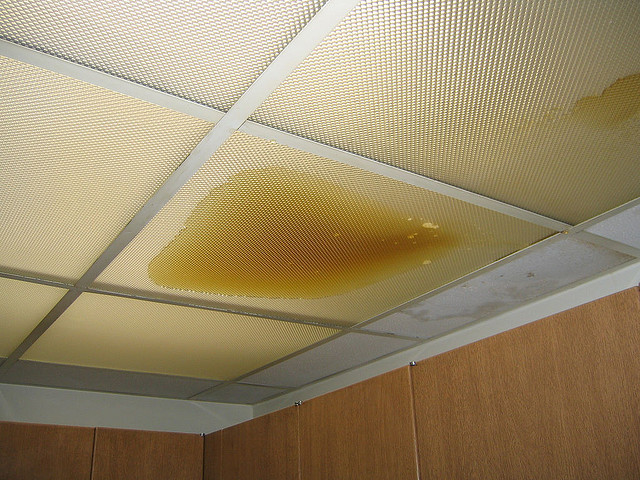Uncover Clever Ways to Identify Hidden Leaking Water Lines
Uncover Clever Ways to Identify Hidden Leaking Water Lines
Blog Article
We have noticed this article about Finding hidden leaks down the page on the web and believe it made perfect sense to relate it with you here.

Early detection of leaking water lines can alleviate a possible catastrophe. Some small water leakages might not be noticeable.
1. Analyze the Water Meter
Every residence has a water meter. Examining it is a proven way that helps you discover leaks. For beginners, turn off all the water resources. Ensure no one will certainly purge, make use of the tap, shower, run the washing device or dishwashing machine. From there, go to the meter and watch if it will transform. Considering that nobody is using it, there should be no activities. If it moves, that indicates a fast-moving leakage. Also, if you discover no changes, wait an hour or two and also check back once again. This implies you may have a slow leakage that could even be below ground.
2. Check Water Consumption
Evaluate your water expenses as well as track your water usage. As the one paying it, you must observe if there are any kind of disparities. If you detect sudden changes, regardless of your intake coinciding, it indicates that you have leaks in your plumbing system. Keep in mind, your water bill should drop under the exact same range monthly. A sudden spike in your costs suggests a fast-moving leak.
A consistent rise every month, even with the same routines, reveals you have a slow-moving leakage that's also slowly escalating. Call a plumber to completely inspect your home, particularly if you feel a warm area on your floor with piping underneath.
3. Do a Food Coloring Test
30% comes from commodes when it comes to water usage. Test to see if they are running correctly. Drop flecks of food color in the tank and also wait 10 mins. If the color in some way infiltrates your dish during that time without flushing, there's a leakage between the tank as well as bowl.
4. Asses Outside Lines
Don't fail to remember to examine your outdoor water lines too. Test faucets by attaching a yard hose. Needs to water leak out of the link, you have a loose rubber gasket. Change this and guarantee all links are tight. If you've got a sprinkler system, it will aid get it expertly analyzed as well as preserved every year. One tiny leakage can waste tons of water and also spike your water expense.
5. Examine and Examine the Scenario
Homeowners must make it a routine to examine under the sink counters and even inside closets for any kind of bad odor or mold and mildew growth. These two warnings show a leak so prompt interest is called for. Doing routine inspections, even bi-annually, can conserve you from a significant issue.
Inspect for stainings and also weakening as many appliances and pipelines have a life expectations. If you presume leaking water lines in your plumbing system, don't wait for it to escalate.
Early discovery of leaking water lines can reduce a potential calamity. Some small water leaks might not be visible. Checking it is a proven way that aids you find leaks. One little leak can throw away heaps of water and increase your water bill.
If you believe leaking water lines in your plumbing system, do not wait for it to escalate.
WARNING SIGNS OF WATER LEAKAGE BEHIND THE WALL
PERSISTENT MUSTY ODORS
As water slowly drips from a leaky pipe inside the wall, flooring and sheetrock stay damp and develop an odor similar to wet cardboard. It generates a musty smell that can help you find hidden leaks.
MOLD IN UNUSUAL AREAS
Mold usually grows in wet areas like kitchens, baths and laundry rooms. If you spot the stuff on walls or baseboards in other rooms of the house, it’s a good indicator of undetected water leaks.
STAINS THAT GROW
When mold thrives around a leaky pipe, it sometimes takes hold on the inside surface of the affected wall. A growing stain on otherwise clean sheetrock is often your sign of a hidden plumbing problem.
PEELING OR BUBBLING WALLPAPER / PAINT
This clue is easy to miss in rooms that don’t get much use. When you see wallpaper separating along seams or paint bubbling or flaking off the wall, blame sheetrock that stays wet because of an undetected leak.
BUCKLED CEILINGS AND STAINED FLOORS
If ceilings or floors in bathrooms, kitchens or laundry areas develop structural problems, don’t rule out constant damp inside the walls. Wet sheetrock can affect adjacent framing, flooring and ceilings.
https://www.servicemasterbyzaba.com/blog/how-to-detect-water-leakage-in-walls/

I stumbled upon that blog post on Hacks to detect leaks while browsing the web. Feel free to set aside a second to share this article if you appreciated it. I enjoy reading our article about Leaking water lines.
Schedule Your Job Now Report this page